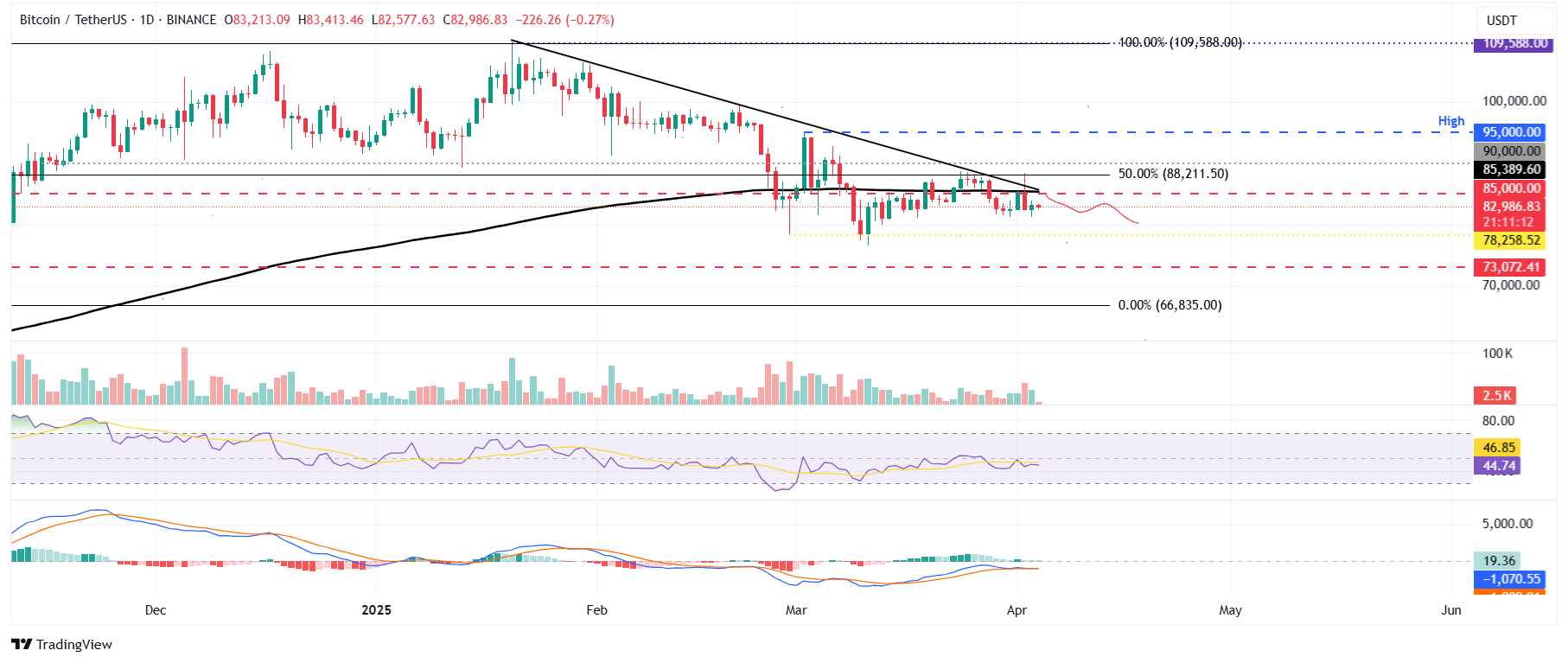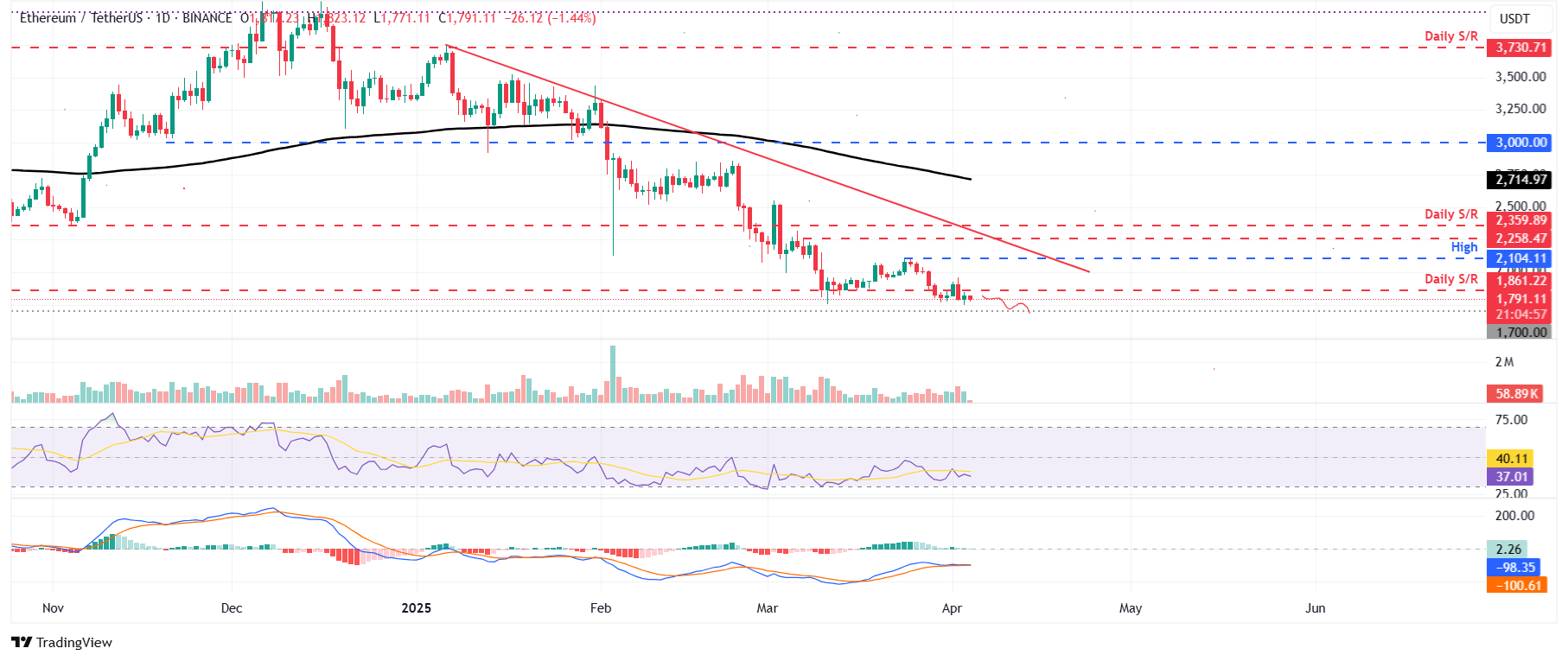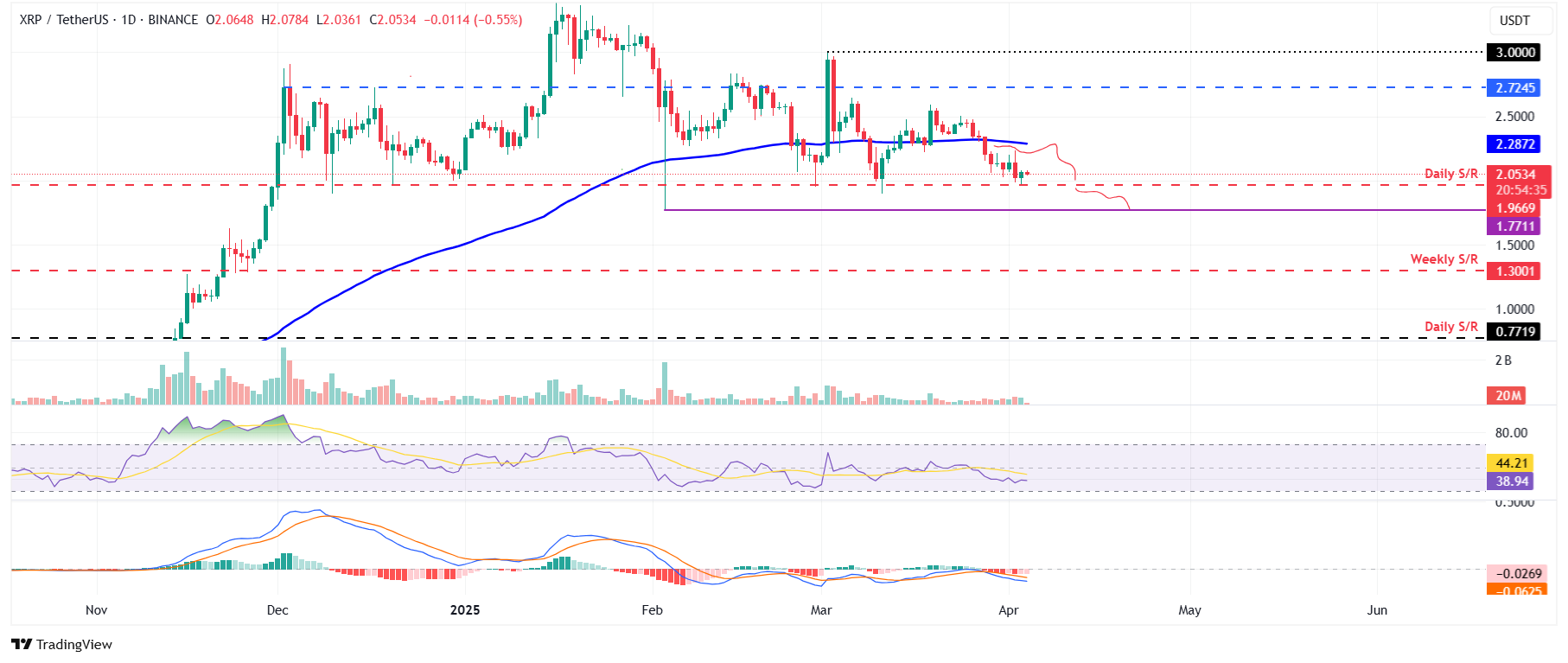Top 3 Price Prediction Bitcoin, Ethereum, Ripple: Bears target sub-$80,000 BTC, ETH 2-year lows, XRP yearly bottom
- Bitcoin price hovers around $83,000 on Friday after it failed to close above $85,000 earlier this week.
- Ethereum price fails to find support around $1,861, opening lower levels not seen since 2023.
- XRP price retests support at $1.96; a firm close below would allow bears to aim for its yearly low.
Bitcoin (BTC) price is hovering around $83,000 on Friday after it failed to close above the $85,000 resistance level earlier this week. Ethereum (ETH) failed to find support around its key level, eyeing lower levels not seen since 2023. Meanwhile, Ripple (XRP) retests its critical support level, a firm close below its aim for its yearly low.
Bitcoin shows weakness as it fails to close above $85,000
Bitcoin was rejected by the 50% Fibonacci retracement (drawn from its November low of $66,835 to its all-time high of $109,588 in January) at $88,211 and declined 3.10% on Wednesday. Moreover, BTC failed to close above its daily resistance level of $85,000. This daily level coincides with the 200-day Exponential Moving Average (EMA) and a descending trendline, making it a key resistance zone. BTC stabilized at around $83,000 the next day. At the time of writing on Friday, it trades slightly below around $83,000.
The Relative Strength Index (RSI) indicator on the daily chart reads 44 after being rejected from its neutral level of 50 on Tuesday, indicating slight bearish momentum. If the RSI continues to slide downwards, the bearish momentum will increase, leading to a sharp fall in the BTC price.
The Moving Average Convergence Divergence (MACD) lines coil against each other, indicating indecisiveness among traders.
If BTC continues to find rejection from the daily resistance at $85,000, it could extend the decline to retest its next support level at $78,258.

BTC/USDT daily chart
However, if BTC recovers and closes above its daily resistance at $85,000, it could extend the recovery rally to the key psychological level of $90,000.
Ethereum bears could aim for $1,700 mark
Ethereum price recovered and closed above the daily support of $1,861 on Tuesday but failed to maintain above this level and declined nearly 6% the next day. ETH stabilized around $1,800 on Thursday. At the time of writing, it trades slightly down to around $1,790.
If ETH continues its downward trend, it could extend its decline to retest its important psychological level of $1,700, which it has not seen since October 2023.
The RSI on the daily chart reads 37, below its neutral level of 50 and points downward, indicating strong bearish momentum.

ETH/USDT daily chart
Conversely, if ETH breaks and finds support around the $1,861 level, it could extend the recovery to its March 24 high of $2,104.
XRP bears could target yearly low once $1.96 support is taken
XRP price closed below its 100-day EMA at $2.30 last week and declined 12.40%. At the start of this week, it stabilized around the $2.14 level but was rejected by its 100-day EMA on Wednesday. XRP bounced off after retesting its daily support level at $1.96 the next day. At the time of writing on Friday, it trades slightly down toward the daily level of $1.96.
If XRP continues correcting and closes below $1.96, it could decline to test its February 3 daily low of $1.77, which is also the lowest level this year.
The RSI on the daily chart reads 39, below its neutral level of 50, like Bitcoin and Ethereum, indicating bearish momentum.

XRP/USDT daily chart
On the other hand, if the daily level at $1.966 holds and XRP recovers, it could extend the recovery to its previously broken 100-day EMA at $2.30.
Bitcoin, altcoins, stablecoins FAQs
Bitcoin is the largest cryptocurrency by market capitalization, a virtual currency designed to serve as money. This form of payment cannot be controlled by any one person, group, or entity, which eliminates the need for third-party participation during financial transactions.
Altcoins are any cryptocurrency apart from Bitcoin, but some also regard Ethereum as a non-altcoin because it is from these two cryptocurrencies that forking happens. If this is true, then Litecoin is the first altcoin, forked from the Bitcoin protocol and, therefore, an “improved” version of it.
Stablecoins are cryptocurrencies designed to have a stable price, with their value backed by a reserve of the asset it represents. To achieve this, the value of any one stablecoin is pegged to a commodity or financial instrument, such as the US Dollar (USD), with its supply regulated by an algorithm or demand. The main goal of stablecoins is to provide an on/off-ramp for investors willing to trade and invest in cryptocurrencies. Stablecoins also allow investors to store value since cryptocurrencies, in general, are subject to volatility.
Bitcoin dominance is the ratio of Bitcoin's market capitalization to the total market capitalization of all cryptocurrencies combined. It provides a clear picture of Bitcoin’s interest among investors. A high BTC dominance typically happens before and during a bull run, in which investors resort to investing in relatively stable and high market capitalization cryptocurrency like Bitcoin. A drop in BTC dominance usually means that investors are moving their capital and/or profits to altcoins in a quest for higher returns, which usually triggers an explosion of altcoin rallies.



